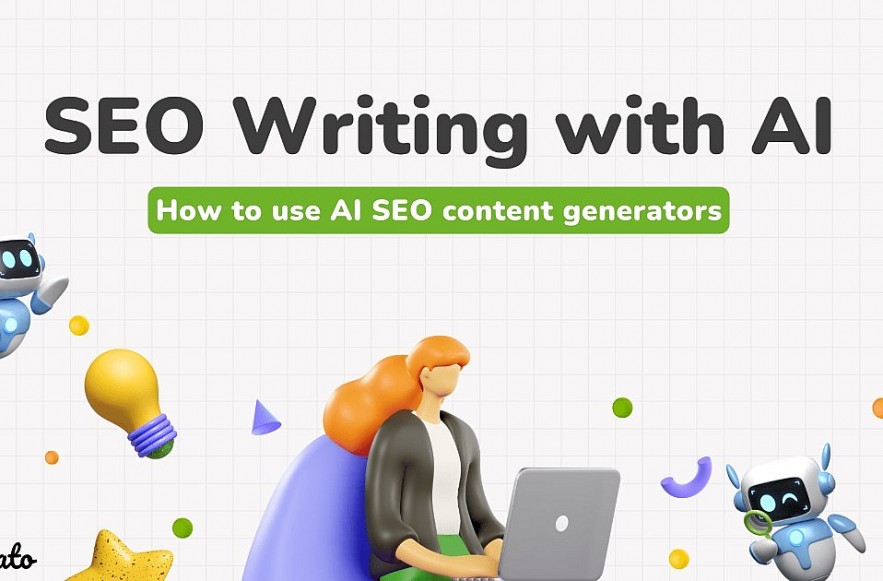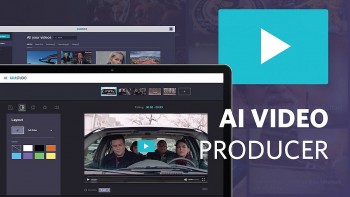The Secret SEO Power of AI Video Generators: How to 10x Blog Traffic with Repurposed Clips
 How to Boost Website Traffic with ChatGPT: A 2025 Deep Strategy Guide How to Boost Website Traffic with ChatGPT: A 2025 Deep Strategy Guide |
 Why News Websites Are Losing Traffic from Google - And It’s Not Just Because of AI Why News Websites Are Losing Traffic from Google - And It’s Not Just Because of AI |
 |
| The Secret SEO Power of AI Video Generators |
In today’s content-saturated landscape, writing a blog post is no longer enough. Even the most insightful article risks being ignored if it’s not paired with dynamic, multimedia elements that grab and hold attention.
But what if you could turn every blog post into a video — automatically — and boost your SEO in the process?
Welcome to the hidden SEO advantage of AI video generators: the ability to repurpose existing content into engaging video clips that improve rankings, increase dwell time, and bring your site to life.
Why Video Matters for SEO (And Why You’re Probably Missing Out)
Google’s algorithms have evolved. Today, they care about more than keywords and backlinks. They measure:
-
User engagement (time on page, bounce rate)
-
Content diversity (text, images, video, interactivity)
-
Topical depth and content freshness
-
Mobile performance and page experience
Adding video directly to your blog or landing page boosts these metrics significantly:
-
Landing pages with video see 53% higher dwell time
-
Pages with embedded video are 45x more likely to rank on page one (Forrester)
-
Video increases mobile engagement and lowers bounce rates
Yet many sites still treat video as optional — or too expensive to produce regularly. That’s where AI video generators change the game.
What Are AI Video Generators — and Why Should Marketers Care?
AI video generators are platforms that automatically turn text-based content (blog posts, scripts, product descriptions) into fully edited videos — often with voiceover, subtitles, and stock footage.
Popular tools include:
-
Pictory – Converts blog articles into short-form branded videos
-
Lumen5 – Visual storytelling from written content
-
Synthesia – AI avatar-based video creation
-
InVideo – Fast, template-driven video assembly
These tools require no filming, no editing skills, and no studio. In minutes, you can go from written post to high-quality video ready to embed, share, or use in paid media.
How AI Video Helps You 10x Blog Traffic: The SEO Flywheel
1. Repurpose Text into Video for Richer Pages
Turn 1,000-word blog posts into 60-90 second explainer videos. Embed at the top of the page to improve time-on-page and engagement signals.
2. Earn More SERP Features
Google increasingly displays videos in top results, even for informational queries. Pages with embedded videos are more likely to earn rich snippets and video carousels.
3. Boost Social Sharing and Link Building
Video previews attract more clicks on social media. Use AI-generated videos as teasers to draw traffic back to your full blog.
4. Reduce Bounce Rate with Scroll-Stopping Visuals
Visitors often scan before committing to read. Video gives them an immediate reason to stay and signals that your content is multimedia-rich and valuable.
5. Reinforce Authority and Topical Coverage
Repurposed video helps position your site as an authority. Use videos to cover subtopics, FAQs, or even quote your own data — building semantic depth.
Step-by-Step: Turn a Blog Post Into an SEO-Boosting Video
-
Choose a high-performing blog post
Start with a post that already ranks or gets consistent organic traffic. Focus on evergreen topics. -
Paste the content into an AI video tool
Use Pictory or Lumen5 to input your text. These tools will generate slide-by-slide visuals and narration. -
Edit and brand the video
Add your logo, brand colors, and a strong call-to-action at the end. Trim unnecessary sections to keep it tight and scannable. -
Embed video in the blog post
Place it above the fold or near key conversion points. Add schema markup (VideoObject) for SEO visibility. -
Upload video to YouTube or Vimeo
Optimize the video title, description, and tags. Link back to your original blog post. -
Distribute across social and email
Use the video as a teaser on social channels, newsletters, and repurpose for short-form video platforms (Instagram Reels, YouTube Shorts, TikTok).
Real-World Example: From Static Post to SEO Magnet
Site: HealthyHabitsNutrition.com
Original Post: “5 Hidden Causes of Belly Fat”
Action Taken:
-
Converted post into 75-second explainer using Pictory
-
Embedded video at the top of the article
-
Uploaded to YouTube with keyword-rich title and link to blog
-
Promoted across social and newsletter
Result After 45 Days:
-
Blog traffic increased by 122%
-
Bounce rate dropped from 68% to 41%
-
Post climbed from position #9 to #3 on Google for primary keyword
Avoid These Common Mistakes
-
Using low-quality AI narration — Choose tools with natural-sounding voiceovers
-
Failing to brand your video — Add logo, CTA, and consistent visuals
-
Overloading with text — Keep videos short, focused, and visual-first
-
Forgetting schema markup — Without VideoObject, Google may not “see” your video
Final Thoughts: Video SEO Without the Pain
Creating video used to be expensive, time-consuming, and hard to scale.
Now, with AI video generators, every blog post can become a traffic-driving video asset — in less than 30 minutes.
If you're serious about SEO, stop thinking of video as optional.
Start using AI to make it automatic, affordable, and effective.
Frequently Asked Questions (FAQs)
1. How does video improve SEO?
Video increases time on page, lowers bounce rate, and adds content diversity — all of which are ranking signals in Google’s algorithm. It can also help pages appear in video carousels and featured snippets.
2. What’s the best AI video tool for converting blog posts?
Pictory and Lumen5 are both excellent options for turning text into video. Pictory is ideal for narrated explainers, while Lumen5 excels at quick social clips from blog excerpts.
3. How long should an SEO-friendly blog video be?
Aim for 60 to 90 seconds. This is long enough to convey value and short enough to hold attention. For in-depth content, up to 2–3 minutes is acceptable if well-paced.
4. Do I need to host the video myself or use YouTube?
You can do either, but for SEO, embedding a YouTube video with optimized metadata (title, description, transcript) can help indexation and backlinking. Self-hosting gives more control over branding but may require schema markup expertise.
5. How do I add schema markup for video SEO?
Use the VideoObject schema to define the video’s name, description, thumbnail, duration, upload date, and embed URL. Tools like Rank Math or Schema Pro can simplify this process.
 Top 10 AI Video Editing Tools for 2025: Revolutionize Your Content Creation Top 10 AI Video Editing Tools for 2025: Revolutionize Your Content Creation I explore the top 10 AI video editing tools that are setting new standards in the industry, complete with details on their ownership, official websites, ... |
 Top 10+ Free AI Tools to Instantly Convert Text into Videos in 2025 Top 10+ Free AI Tools to Instantly Convert Text into Videos in 2025 The rise of artificial intelligence (AI) has revolutionized content creation, enabling users to effortlessly generate images, text, videos, and audio using powerful free AI tools. |
 How Small Businesses Are Replacing Expensive Agencies with AI Video Generators How Small Businesses Are Replacing Expensive Agencies with AI Video Generators Discover how small businesses are cutting video production costs and scaling content fast using AI video generators. Practical strategies, real tools, and a simple roadmap ... |
 Can AI Video Generators Replace Human Creativity? A Creator’s Perspective Can AI Video Generators Replace Human Creativity? A Creator’s Perspective AI video generators are powerful — but can they match human creativity? Explore the limits, possibilities, and future of AI-generated video from a real creator’s ... |

























